Fujifilm’s X-T10 shares many commonalities with the existing X-T1 but there are many changes too. We dig deep to find out main differences between the Fuji X-T10 and the X-T1.
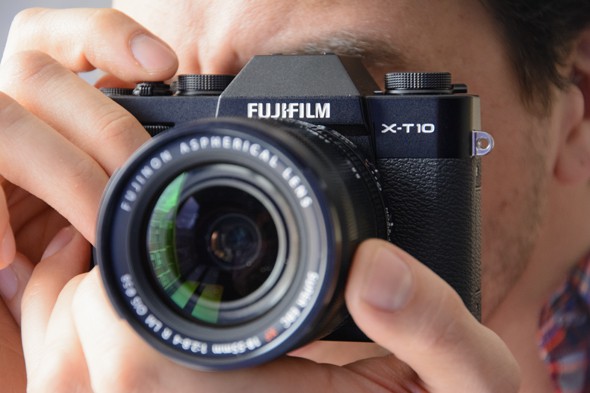
1. Viewfinder
While the X-T10 and X-T1 share a 2.36m-dot OLED panel in their respective viewfinders, the X-T10’s has a magnification of 0.62x and a horizontal angle of view of 25° versus 0.77x and 31° on the X-T1. The eye piece has also changed from 21.5mm to 17.5mm, and the GUI has also been revised for the new model for “stress-free viewing”, although the lag time is said to be the same on both, at 0.005sec.
2. Built-in flash
While the X-T1 comes with a detachable flash, the X-T10 has one integrated into the body itself. This is released by flicking a lever to the side of the drive-mode dial.
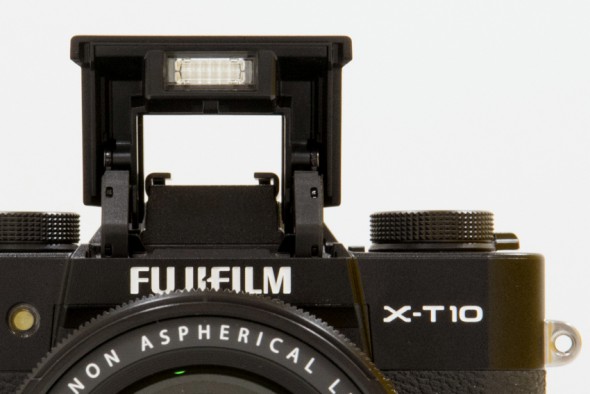
3. Weather sealing
One of the more significant differences between the two models, albeit one which cannot be as easily appreciated as other changes, is that the X-T10 lacks the X-T1’s weather-sealed body.
4. AF system
The X-T10 sports an updated AF system, one that’s said to be faster that those in previous models and with a wider variety of options for tracking moving subjects. Furthermore, it also has the ability to detect eyes as part of its Face Detection system. All of this will, however, be made available for X-T1 users in a forthcoming firmware update.
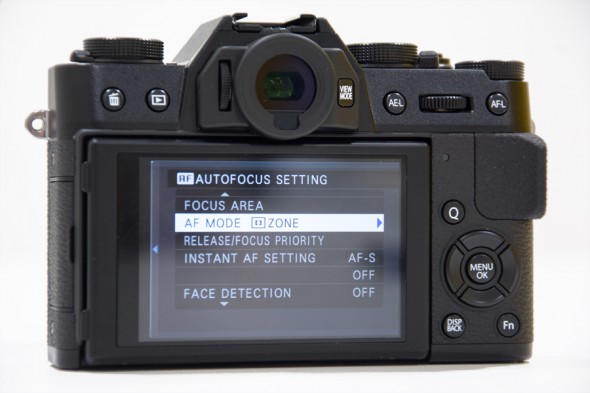
5. ISO adjustment
While the X-T1 bore an ISO dial above a drive-mode collar on its top plate, the X-T10 replaces these with a drive-mode dial. Control over ISO, therefore, happen via the Menu and Q. menu (and a function button of the user’s choosing if this is set up).
6. Metering mode adjustment
The X-T1’s metering-mode dial, which appeared beneath the shutter-speed dial on the X-T1, does not feature on the X-T10. It is, however, possible to change the metering mode on the new camera in a number of ways, either through the Menu, Q. Menu or by assigning it to a Function button.
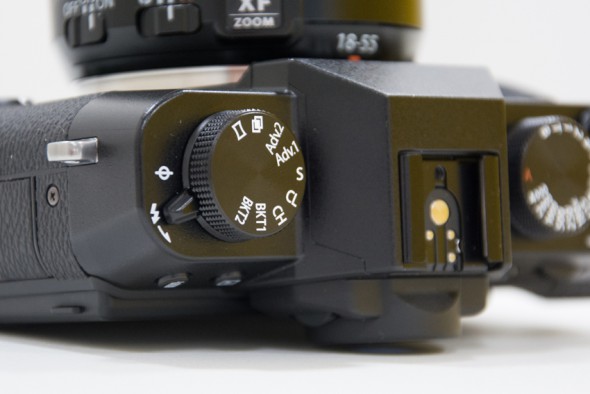
7. Drive mode options
The X-T1 has one Adv and one Bkt option on its drive-mode dial, and to the X-T10, Fujifilm has added another of each.
8. Electronic shutter
Fujifilm’s electronic shutter, which was brought to the X-T1 via the aforementioned firmware update, is available on the X-T10 as standard. This joins the mechanical dial and allows users to capture images at a maximum shutter speed of 1/32,000sec.
9. LCD Screen
The two cameras offer a 3in tiltable LCD, although the X-T10’s unit has a slightly lower resolution of 920k dots (next to the X-T1’s 1040k dots).
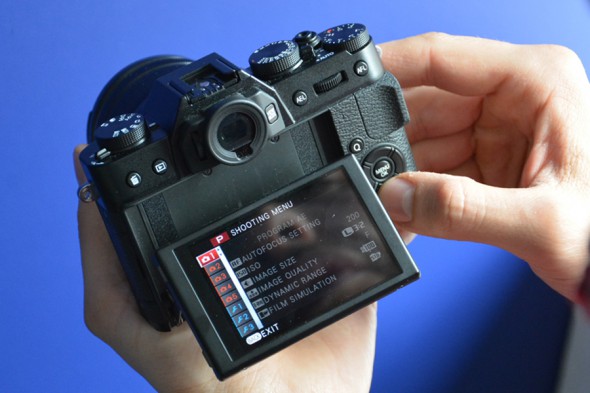
10. Locking button inside shutter-speed dial
The locking button inside the X-T1’s shutter-speed dial does not feature on the X-T10, meaning the dial itself turns freely.
11. Thumb rest
The design of the X-T10’s thumb rest has been revised from that on the X-T1, positioned closer to the edge and with a more defined shape.
12. Grip
The X-T10 follows the X-T1 in having a grip on its front plate, but it’s design is slightly different and not quite as substantial.
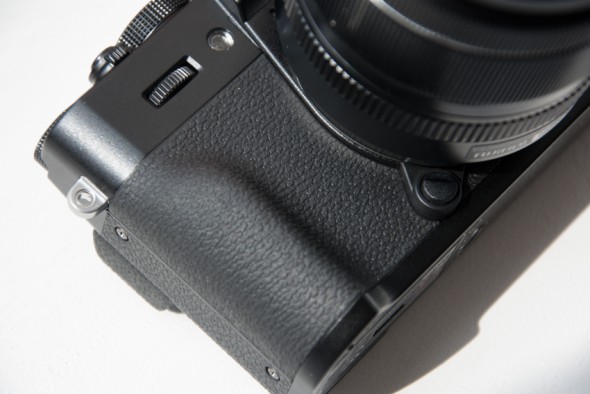
13. Battery grip compatibility
Unlike the X-T1, the X-T10 is not compatible with the VG-XT1 vertical grip, although it is compatible with the new battery-less MHG-XT10 grip (below). As this does not plug into the camera in the same way, the base of the camera lacks the X-T1’s contacts.
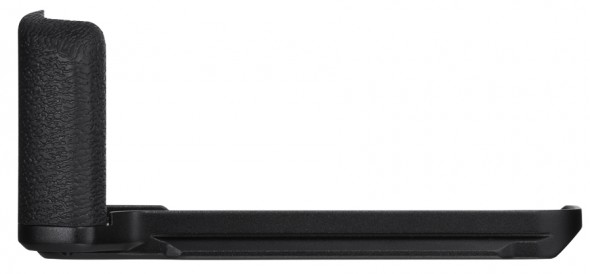
14. Flash-sync socket
One of the more visible changes between the two models is that the X-T10 lacks the X-T1’s flash-sync socket on its front plate.
15. Function button rearrangement
Fujifilm has not carried over the X-T1’s front-plate Function button for the new model and it has moved the Fn button on the X-T1’s top plate to the rear plate of the X-T10.
16. Diopter control and View Mode buttons
The X-T10’s flatter viewfinder chamber has forced the View Mode and diopter controls from its sides to the back. These now sit either side of the eyepiece.
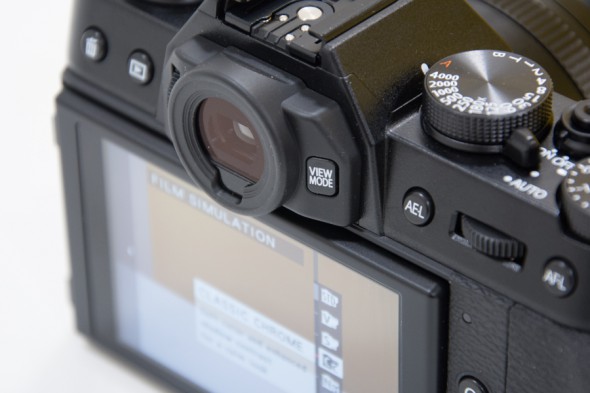
17. ISO option in Q menu
The X-T1 dropped the previously seen ISO option from its Quick menu and replaced it with Face Detection. As the X-T10 lacks a dedicated ISO dial, this has now reappeared here, with Face Detection no longer selectable via the Q. menu.
18. Auto lever
The X-T10’s shutter speed dial sits on top of a lever which switches the camera’s exposure mode between whatever you have it set to and Auto. So, if you have your lens set to ‘A’ and the shutter-speed dial set to anything other than the ‘A’ option (ie shutter-priority mode), you can quickly change from this to Auto with a flick of the switch.
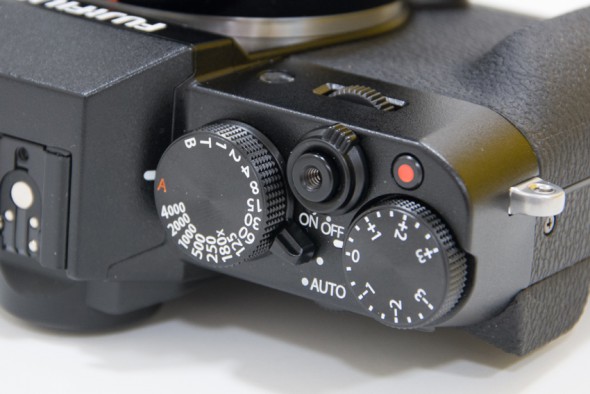
19. X100T Graphic User Interface (GUI) in shooting mode
The X-T10 inherits the same shooting graphic user interface as the Fuji X100T compact camera.
20. Classic Chrome mode
While the X-T1 only gained its Classic Chrome Film Simulation mode with its firmware upgrade, the X-T10 features it straight out of the box.
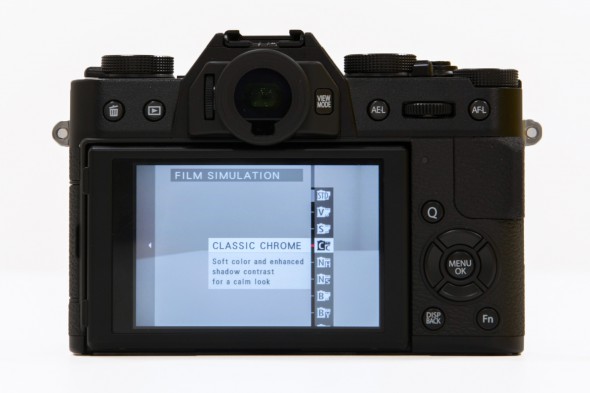
21. Scene Pattern Recognition
The X-T10’s Auto mode is equipped with a 58-pattern Scene Recognition system, which is said to choose the aperture, shutter speed and ISO suitable for the situation with which it’s presented.
22. Burst depth
The X-T10 can capture up to 8 JPEGs at 8fps, next to the X-T1’s 47 JPEGs at the same rate (depending on the memory card and the settings chosen). At 3fps, both cameras can capture JPEGs up to the capacity of the card in use.
23. SD card slot
Although both cameras accept SDHC and SDXC cards, the X-T10 has its SDHC/SDXC card slot in the camera’s battery compartment, which is accessed via a door at the camera’s base rather than through a separate side door as on the X-T1. This means the card slot cannot be accessed while the camera is mounted on a tripod.
24. Support for UHS-II cards
While the X-T1 supports both UHS-1 and UHS-II types of SDHC and SDXC memory cards, the X-T10 only supports UHS-I types.
25. Status light
The status light which appeared in the X-T1’s thumb rest has now moved further towards the LCD on the X-T10.
26. Size
The X-T10’s body is 11mm shorter, 7mm smaller and almost 6mm thinner than the X-T1, which is said to equate to a 27% reduction in size.
27. Weight
As we would expect from a smaller camera, the X-T10 is also lighter by almost 60g, weighing 381g with a battery and memory card vs the X-T1’s 440g.
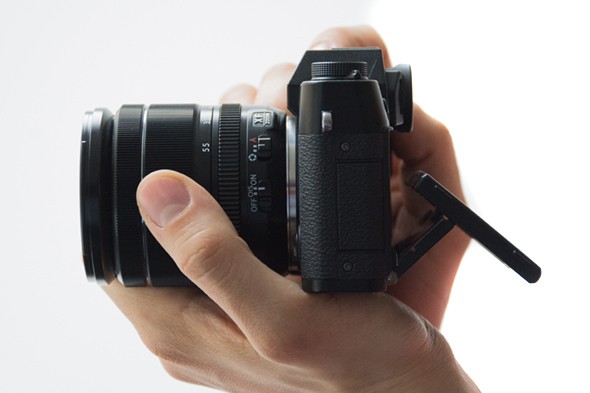
Click here to pre-order the Fuji X-T10
Related articles
Fuji X-T10 announced
Fuji X-T10: hands-on review
Fuji X-T1 review
